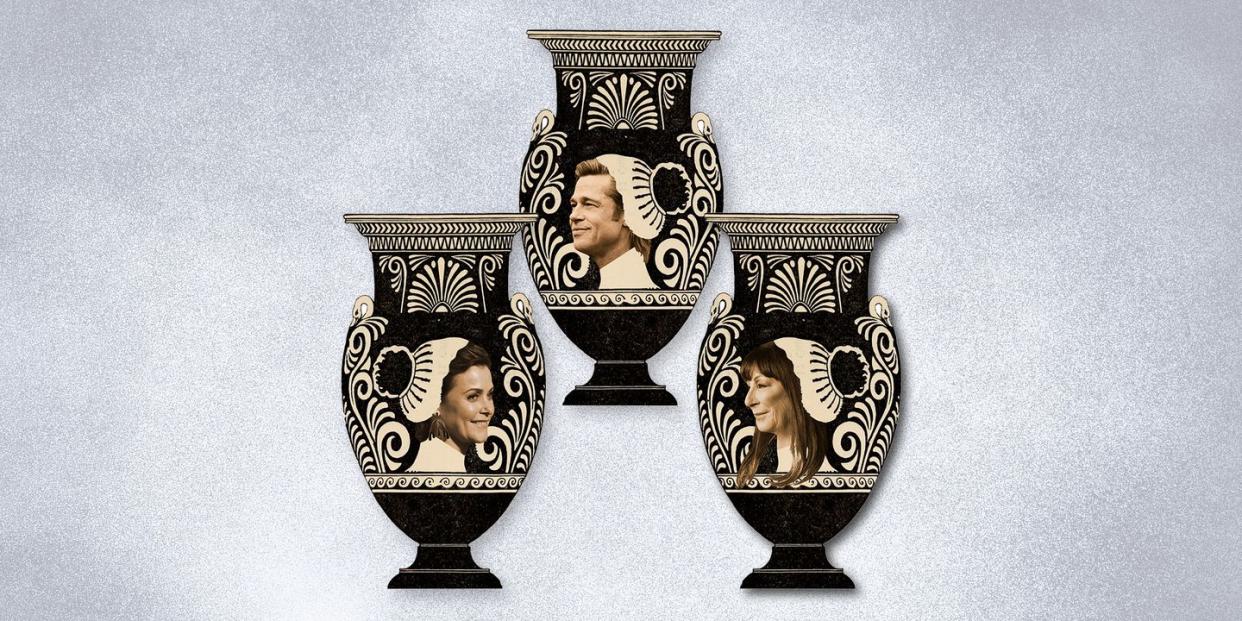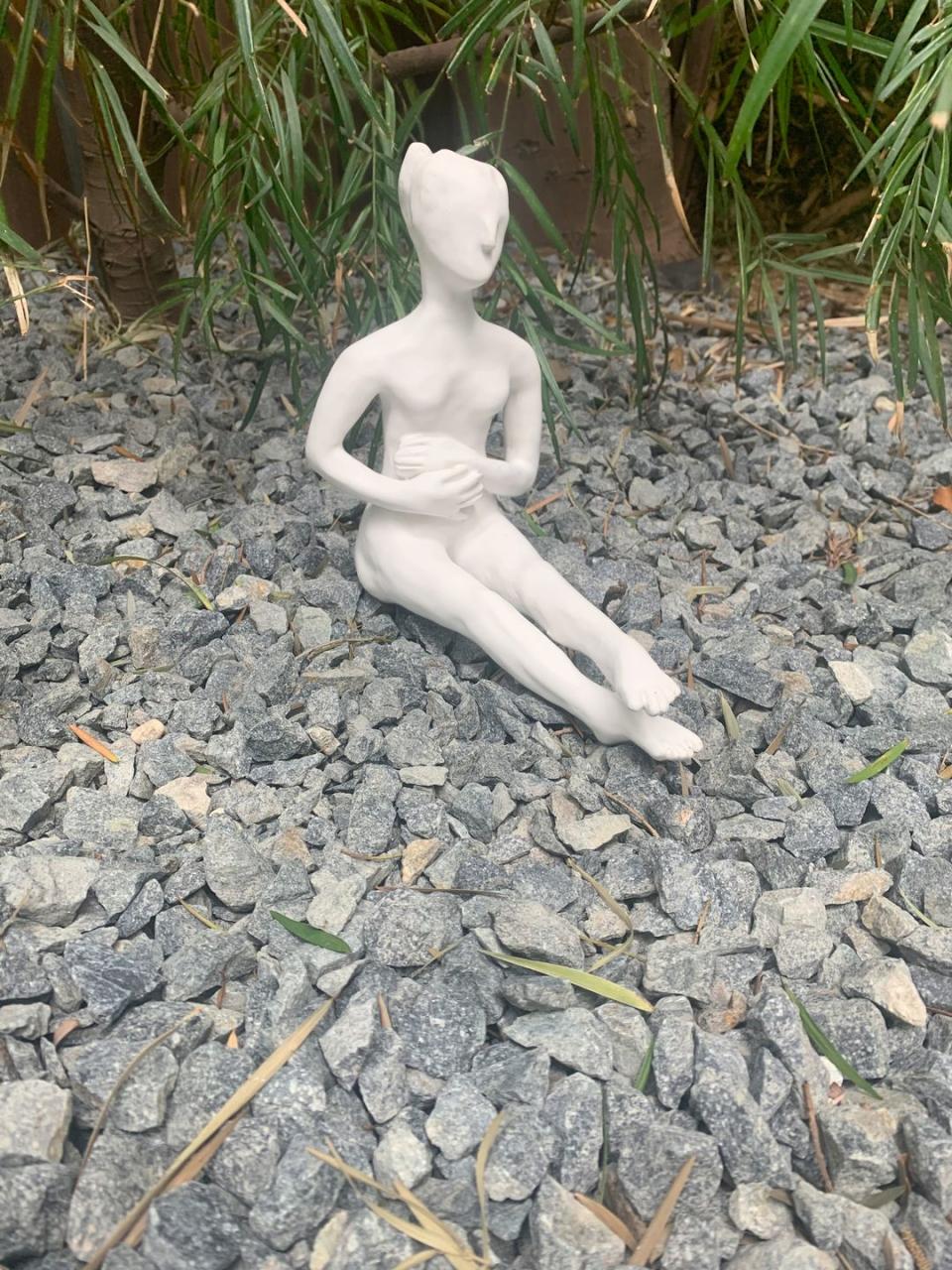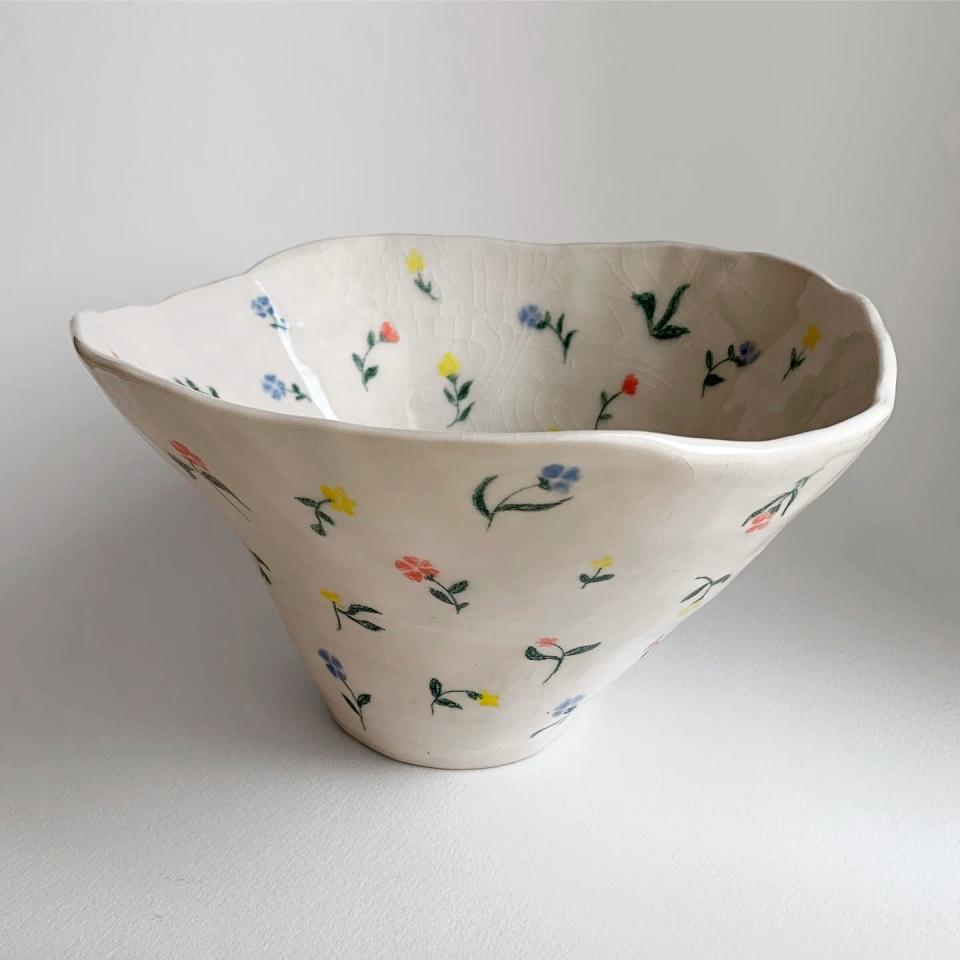The Glazed Age: The Year Everyone Became a Ceramicist

“My friends are probably sick of my ceramics by now,” Carey Lowell says from her Montecito pottery studio, with its view of the Pacific Ocean. She’s being modest. Her perfectly imperfect vases, bowls, and incense holders are not just beautiful but sought after, once sold at Barneys New York and collected from coast to coast by the likes of Lisa Eisner, Lauren Santo Domingo, Muriel Brandolini, and Jann Wenner.
First, Lowell was a model for the photographers Peter Lindbergh and Bruce Weber, then a Law & Order actor. Now she’s a full-time ceramicist. She trained via Zoom and says she could watch pottery videos on Insta-gram all day long. She also loves to collect. “The first piece was from Morocco, where there are beautiful ceramics around Fez. Something from Japan. Now I go to artists I like. Giselle Hicks, Pete Pinnell, Anjelica Huston’s beautiful figures,” Lowell tells T&C. “I don’t know if you know her ceramics. She makes these ladies, all in beautiful poses. I have one lying the way she would be on the beach.”
Yes, that Anjelica Huston.
“I guess it was about six years ago when I started playing around with clay,” Huston says. “My husband [the late Robert Graham] was an amazing sculptor and made these massive, monumental bronze figures and beautiful nudes. I was always fascinated by the art form, but I didn’t dare delve into it while he was alive.”

Add Lowell and Huston to the list of clay--loving, mudslinging notables, which includes Jimmy Kimmel’s daughter Katie Kimmel, an Instagram star thanks to her whimsical wild pet vases; and the painter Peter Halley’s daughter Isabel Halley, who is celebrated for her striped porcelain. There is also Jenna Bush Hager’s best friend, Laird Gough, a veteran of both Ralph Lauren and Tory Burch who makes jugs that manage to recall both ancient Greece and her childhood in Virginia. “Her studio has become our ladies lair, just a quiet, beautiful white space unlike our homes, which have Legos everywhere,” says Bush Hager, who adds that she has gifted pieces to her tough-to-shop-for parents (aka former president George W. Bush and first lady Laura Bush).
Call them the ladies who sculpt. And not just ladies, either. Jeremy Anderson, the co-founder of the interiors studio Apparatus, turned ceramics into a second act; Seth Rogen built a successful side hustle in clay (lots of cannabis accessories); and both Brad Pitt and Channing Tatum have flirted with calling themselves sculptors. In the old days—the ’90s—the affluent but creatively stifled would busy themselves DJing behind a turntable. Now they’re getting behind a potter’s wheel.

“During the course of the pandemic, I put in a little pottery studio up at my ranch in the Central Valley. I have my wheel, my clay, my kiln, my glazes,” Huston says. “I’ve always loved to make things with my hands. For me pottery is so satisfying and so different from acting, where I am always part of a larger whole. My pieces are something I -create myself, all one of a kind. I’ve just started a series of hand-painted bowls.”
If being a potter sounds like the lockdown version of launching a handbag or jewelry line—socialite hobbies enabled by privilege and leisure time—consider that, like acting or being a great host, making ceramics is harder than it looks. “The stereotype is the movie Ghost—that it’s easy, like, ‘Oh, I could make that,’ ” says Bari Ziperstein, one of the most prominent American ceramicists. It isn’t. Take it from the artists themselves.
“I first tried my hand at throwing bowls on the wheel, which can be both exhilarating, when it works, and frustrating,” Huston tells me. “It can take years to really master. And then one day I was in a yoga class, watching this particular group of women stretch beforehand, very dancerlike, and I found myself inspired to try to sculpt their portraits. Carey has one of these women.”

Juliet Litman, the head of production at the Ringer podcast network, explains her decade of collecting ceramics as being rooted in both function and attainability. “I can’t afford an Ellsworth Kelly and never will be able to, but I can buy pieces over time to patronize my favorite ceramic artists,” she says.
Some of the ceramic world’s most successful artists make pieces that almost anyone can afford. The bells by the Canadian artist Michele Quan sell for $115; the wall hangings by L.A. ceramicist Heather Levine go for $300; the New Yorker Laura Chautin makes $850 bowls inspired by the garden of the late avant-garde filmmaker Derek Jarman. Even Ziperstein’s side tables retail for $2,750. An Anjelica Huston woman figure? $2,500.
Some experienced artists are raising their eyebrows at the boldfaced, well-connected newcomers. “You have to start somewhere. But a lot of new artists have flooded the market, and things look exactly the same,” Ziperstein quips. Of Lowell’s work she says, “I wouldn’t know about this actress or her ceramics career in that way. We don’t travel in the same circles or have the same clients. This is nothing about who is better or worse. Or looking down for getting into things later in life.”

Levine says the ease of self--promotion—a website and an Insta-gram account—gives rookies no incentive to pursue a formal education. “I’m in Los Angeles and have a hard time hiring people, because no one wants experience working in a studio anymore,” she says. “They want to do their own thing.”
But the thing about potters is that, at the end of the day, they’re an extremely chill bunch. “I think everyone who wants to make art should pursue that. This is me not being bitchy at all,” says Chautin, who began her artistic practice as a watercolor illustrator. “At my core I don’t really care who is making ceramics. I’m imagining Paris Hilton on the wheel and laughing. I truly would be so excited to see her work.”

Lowell does not aspire to be the next Niki de Saint Phalle, the rebel heiress who is now hailed as one of the 20th century’s greatest sculptors, or even the next Katie Stout, the 33-year-old Brooklynite whose “naive pop” works are exhibited by R & Company in New York and Nina Johnson in Miami. The actor just enjoys the flow she gets into at the wheel.
“The creative force is operating through you,” Lowell says. “You’re not conscious. It’s done and you’re like, ‘Wow, I just made that.’ ” Every so often she makes time to go to her studio and cathartically smash anything that didn’t turn out as she’d hoped.
Money, as always, remains a complicated subject. “It’s not something I could make a living at. It’s not something I have to make a living at. It’s only me in the studio, and I’m not a production potter,” Lowell says. “It’s a labor of love.”
This story appears in the April 2022 issue of Town & Country. SUBSCRIBE NOW
You Might Also Like